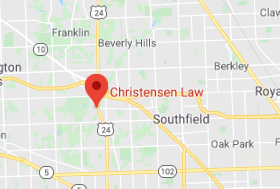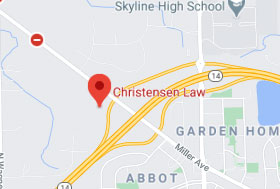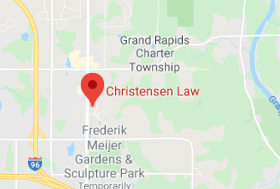
Car accidents are traumatic events that can result in life-changing injuries. The extreme forces of a collision wreak havoc on the human body, leaving victims with catastrophic trauma such as broken bones, brain injuries, internal organ damage, paralysis, and other severe injuries.
If you get hurt in a car accident in Michigan, your no-fault Personal Injury Protection (PIP) benefits should pay for your medical expenses and wage loss up to your policy limits. But some crashes take a toll that lasts a lifetime. If someone else was to blame for the wreck that injured you, shouldn’t they pay for your pain and suffering?
Fortunately, Michigan law does allow car accident victims to seek compensation for pain and suffering from the at-fault driver. However, you must meet specific legal criteria for a valid personal injury claim. An Ann Arbor car accident lawyer at Christensen Law can explain your options in a free case review. Call or contact us now.
What is Pain and Suffering?
While a motor vehicle accident certainly takes a financial toll, the bills are not the only consequences of a crash. Collisions also cause serious physical pain and emotional suffering. In Michigan, eligible individuals can pursue compensation for these non-economic losses through a pain and suffering claim.
Examples of pain and suffering include:
- Physical pain and trauma caused by car accident injuries
- Mental anguish
- Loss of social pleasure and enjoyment
- Embarrassment or humiliation caused by injuries, scarring, or disfigurement
Pain and suffering can cause physical discomfort or mental anguish so severe that it prevents a person from returning to living a normal life. The experienced car accident attorneys from Christensen Law help victims pursue maximum compensation for everything they’ve been through.
Do No-Fault Benefits Cover Pain and Suffering?
Your no-fault Personal Injury Protection (PIP) coverage will not compensate you for pain and suffering after a car accident. PIP insurance coverage will generally reimburse you for medical expenses, a portion of your lost wages, and attendant care. However, coverage does not extend to pain and suffering or other non-monetary damages.
Victims can seek pain and suffering compensation through a personal injury lawsuit. To file a personal injury lawsuit against a negligent driver, Michigan requires you to show that your injuries caused a serious impairment of body function.
What is the Average Compensation for Pain and Suffering?
How you experience pain and your tolerance to it differs from your neighbor down the street. Pain and suffering is subjective, meaning it is hard to quantify and must be addressed on a case-by-case basis. Therefore, there is no average compensation for pain and suffering, nor should there be.
At Christensen Law, we believe you deserve fair compensation that accounts for your injuries and the uniqueness of your situation. We fight for what’s right and work aggressively to push for a favorable financial outcome for every client. View our results to see the compensation we have achieved for our clients. If you want a personalized estimate of what your pain and suffering claim may be worth, get in touch with our Ann Arbor office to set up a free initial case review.
Evidence to Prove Pain and Suffering
If a negligent driver is at fault for causing the accident that left you injured, you can hold them accountable for their actions and seek compensation for pain and suffering. However, in a personal injury lawsuit against the driver or their insurer, you will need substantial evidence proving your injuries caused you pain and suffering.
Courts generally want proof that your injuries are significant and have profoundly impacted your life. Evidence to support your case may include:
- Medical documentation
- Testimony of family members, work colleagues, friends, neighbors
- Photographs of pre-accident activities
- Medical bills
- Rehabilitation reports
- List of medications
- Mental health reports from a therapist or psychologist
- Photos or videos of the accident
- Photos of your injuries
- Proof of lost wages or income
- Personal pain journal
- Testimony about how the injuries have impacted the victim’s life
Our law firm looks carefully at how a client’s injuries have affected all areas of their life when estimating a case value for pain and suffering.
Contact an Ann Arbor Car Accident Attorney
The trauma of an Ann Arbor car accident can leave not only physical scars, but also mental and emotional ones. While money can’t alleviate your pain, it can help you get the treatment and care you need to move forward.
If you are experiencing pain and suffering after a car collision with a negligent driver in Michigan, discuss your situation with an experienced Ann Arbor car accident attorney from Christensen Law today. Contact us today for a free case review. There’s no obligation.






